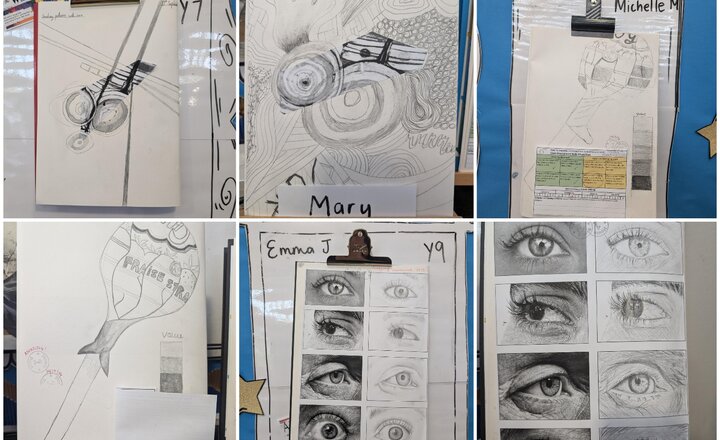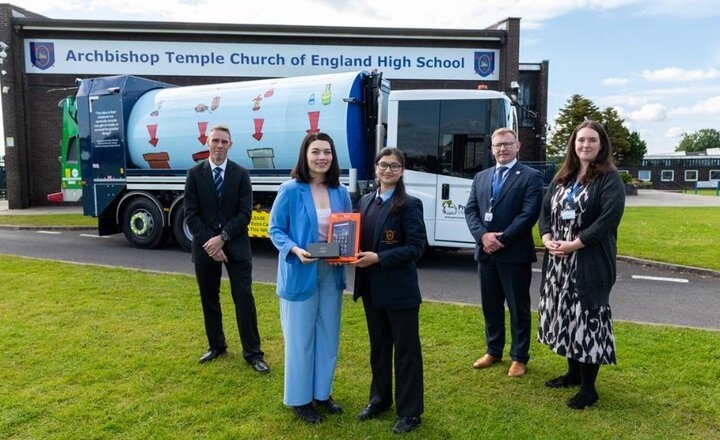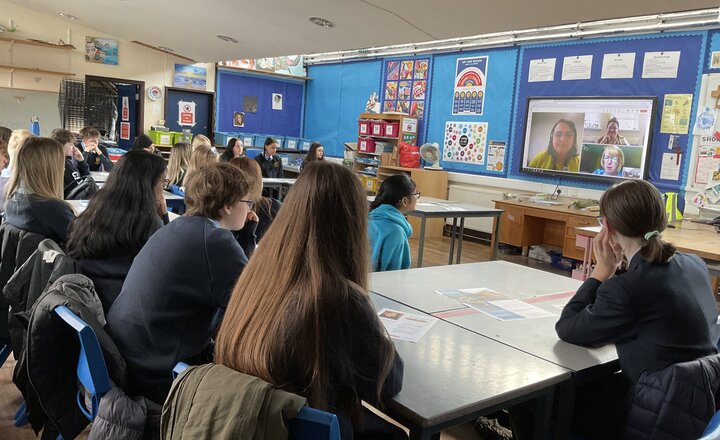Subject: Art and Design
CURRICULUM INTENT
Every student is an artist; creativity is a gift entrusted to us all. The art curriculum at Archbishop Temple Church of England School aims to discover and nurture this within each individual empowering them with a creative skillset to let their light shine. Students' creativity is encouraged in a safe and supportive environment allowing students to explore the awe, wonder and beauty of the world we live in. Students will take creative risks as they navigate through the history, movements and genres of art and design. Our aim is to inspire, challenge and motivate the artists in our classrooms, regardless of ability, so that, through the creation of art, students can enrich their lives and the lives of others.
Ecclesiastes 3:11 - He has made everything beautiful in its time.
IMPLEMENTATION
Key stage 3 art is taught over 3 years in mixed ability groups (starting in year 7 and ending in year 9) delivered in one hour lessons, held once per week. The provision is delivered through three, themed sketchbook topics each year. Each sketchbook topic focuses on one of the art and design techniques of painting, printmaking and sculpture. This allows sufficient time for students to meaningfully engage with each technique and explore each in appropriate depth, so they can revisit and build on their knowledge and handling of each technique over each year.
Key stage 4 art is taught during years 10 and 11. Students use the knowledge gained during key stage 3 as a foundation on which to build upon. Students complete the AQA GCSE Art and Design, Fine Art qualification. This is split into two components; Component 1: Portfolio makes up 60% of students overall GCSE mark; Component 2: Non-examination assessment makes up 40% of students overall GCSE mark.
Component 1: Portfolio
This consists of a sustained project developed in response to a subject, theme, task or brief evidencing the journey from initial engagement with an idea(s) to the realisation of intentions. This will give students the opportunity to demonstrate, through an extended creative response, their ability to draw together different areas of knowledge, skills and/or understanding from across their course of study. The focus/theme of the sustained project changes year on year.
Component 1 also includes a selection of further work resulting from activities such as trials and experiments; skills-based workshops; mini and/or foundation projects; responses to gallery, museum or site visits; work placements; independent study and evidence of the student’s specific role in any group work undertaken.
Component 2: Non-examination Assessment
Component 2 consists of a further sustained topic, during which students respond to their chosen starting point from an externally set assignment paper, evidencing coverage of all four assessment objectives. Students will sit a 10 hour sustained period of time at the end of the spring term to produce a final response to their chosen starting point.
Drawing is the starting point of all artwork; it is a technique in which images are depicted on a surface by making lines. ‘Art is a line around your thoughts.’ Gustav Klimt. Drawing reoccurs as a focus throughout the KS3 art curriculum to help students develop this skill of visual communication. Direct observational drawing and grid drawing are technical drawing techniques employed to support students to draw accurately by considering scale and proportion. Experimental techniques are taught alongside this such as drawing with cut paper and collage and drawing with Sgraffito.
Students are introduced to the visual elements of art and design in year 7 with this knowledge built upon in years 8 and 9. The visual elements are explored through the analysis of these in artwork, and also used by students when creating their own artworks. These are a regular focus throughout KS3. Understanding the visual elements allows learners to think more deeply and develop a clearer understanding of how art is created.
IMPACT
Marking and Assessment
Marking and assessment is planned into the art curriculum. Student’s work is marking using both verbal and written feedback using a variety of peer and teacher assessment.
KS3 student’s complete a baseline assessment at the start of year 7. This has been designed taking into consideration the information published in ‘Y7 Baseline thinking in Art and Design – 2016’ by NSEAD (National Society for Art and Design Education). This is a summative assessment which provides the Head of Department and Art teachers with benchmarking information on both ability and prior experience in art and design which is used to inform targets, redefine curriculum planning, plan appropriate challenge and expectations within the department.
KS3 students receive one formal formative written assessment of their work during each half term. This assessment focuses on key concept knowledge and proficiency of handling materials, processes and techniques allowing students to become more proficient, and deepen their knowledge, of the core skill being developed in that topic (painting, printmaking or sculpture). Students receive written feedback via a feedback slip. Students are given TTI (time to improve) which is directed, purposeful time to improve their artwork and knowledge during the lesson they receive written feedback so that they can make progress.
KS3 students final artwork produced at the end of each topic is a summative assessment, assessed using the KS3 Assessment Criteria Table. This is used to measure progress and learning over time.
Key stage 4 students receive written feedback in line with the Joint Council for Qualifications guidelines on written feedback for non-examination assessments (NEA). All work produced during GCSE Art is defined as NEA.
Examinations
Key stage 3 students demonstrate their understanding and ability of knowledge and skill in a final artwork created at the end of each topic. This is completed over a relevant number of lessons.
Year 10 – I day Mock examination – 5 hours Summer term
Year 11 – 2 day Mock examination – 10 hours Autumn Term
Year 11 – 2 day Final examination – 10 hours Summer term.
Note: The exams in art are purely practical and all of the preparation takes place in sketchbooks ahead of the exam itself. There is no written paper.
Careers and Progression
Exhibitions
TBC: A curated selection of Art & Design GCSE leaver artwork is to be exhibited during the Year 11 Rewards Evening held in the Autumn term. All Art & Design GCSE students will be represented by at least one artwork produced over their GCSE.
Careers and Progression
The GCSE course is purposely broad-based enabling students to go on to study a range of Art and Design-based courses at college. Previous students have gone on to further study and careers in Fashion and Textile design, Photography, Graphic design, Fine Art and Architecture.
Note: Cardinal Newman College and Runshaw College currently require a GCSE Art and Design for entry onto other creative courses at A level. To take A level Textiles for example, students would need a qualification in both subjects.
Staff Details
Ms H Murphy (Head of Art)
Art and Design 5 year Curriculum Plan
Reading in Art & Design
Related News

Artist of the Week 23.09.24


